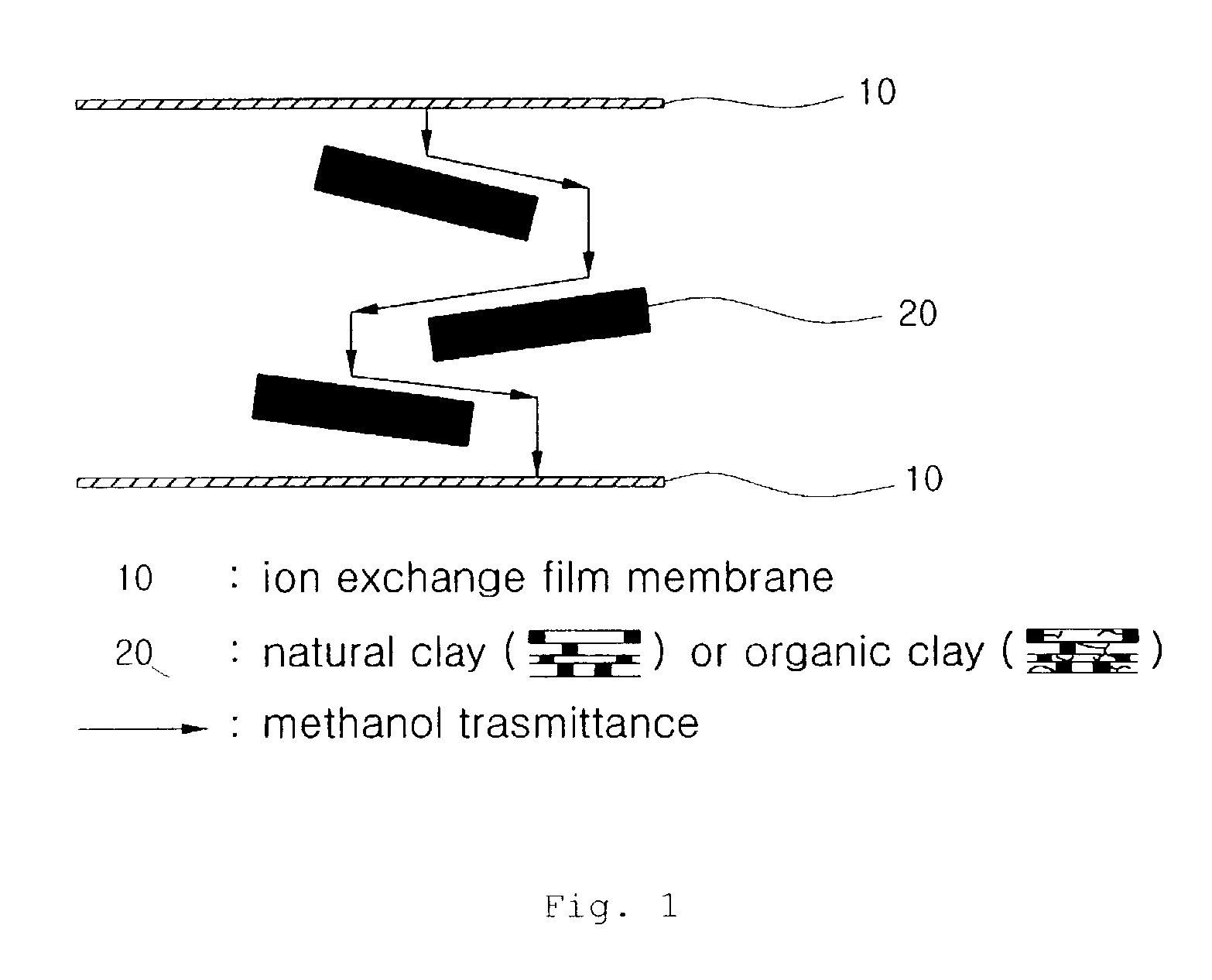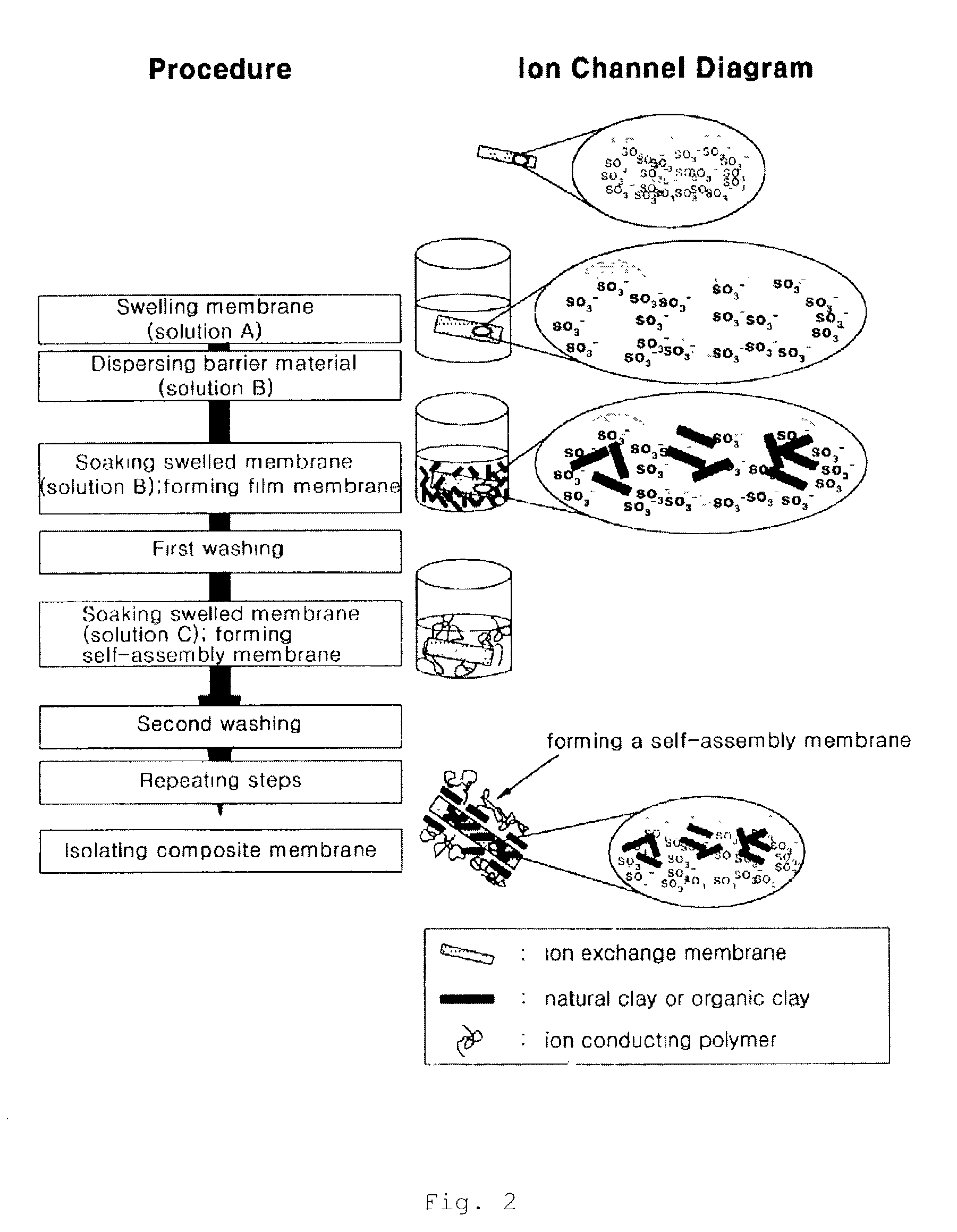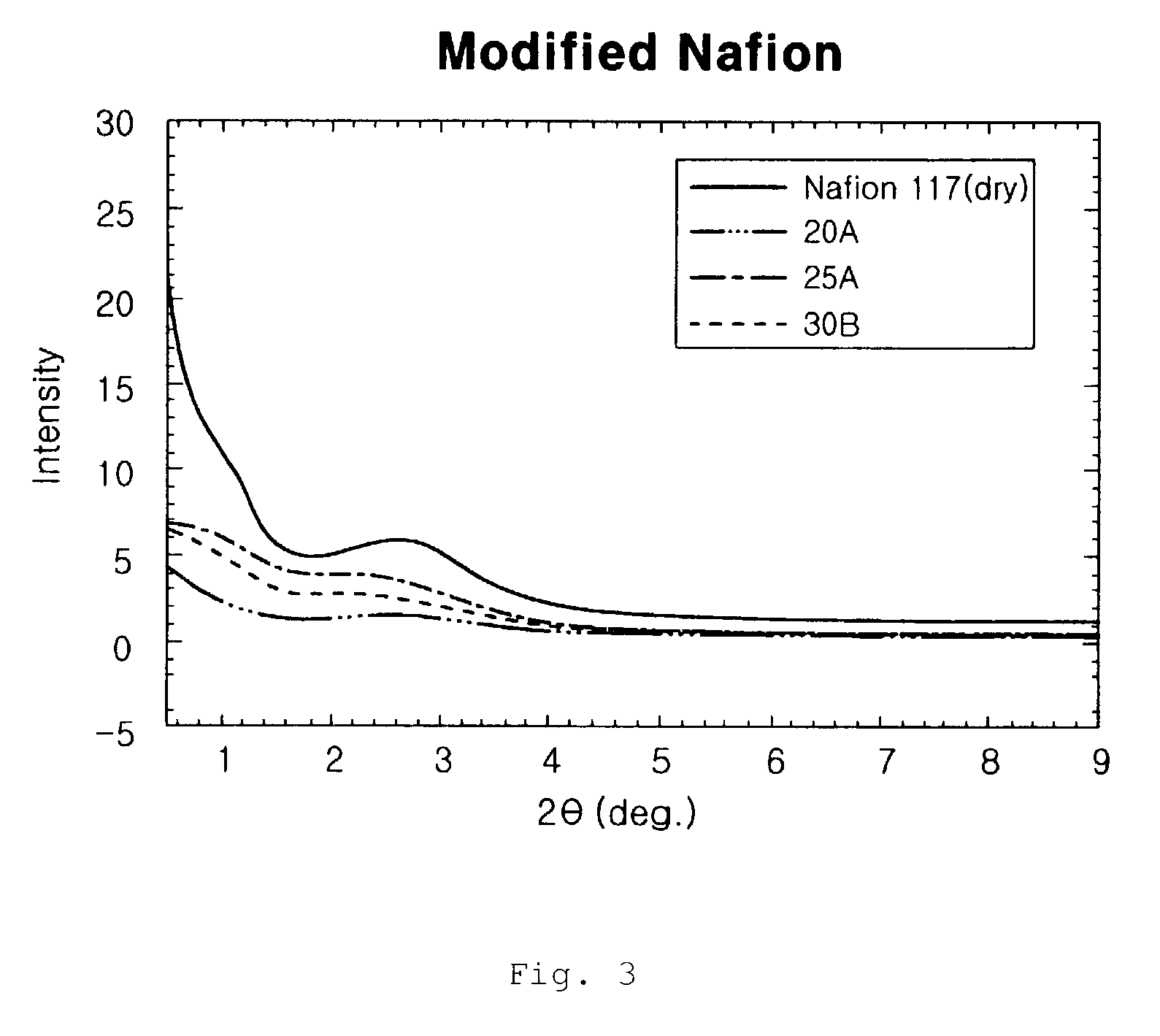Proton exchange composite membranes, composite solutions, and method for manufacturing and fuel cell using the same
a technology of proton conductivity and composite membrane, which is applied in the field composite solution, manufacturing method of proton exchange composite membrane, and fuel cell, can solve the problems of membranes not being optimal with regard to methanol blocking, dmfcs, and cross-over problems, so as to effectively block methanol, prevent diffusion of methanol, and achieve high proton conductivity
- Summary
- Abstract
- Description
- Claims
- Application Information
AI Technical Summary
Benefits of technology
Problems solved by technology
Method used
Image
Examples
example 1
[0038]Sodium montmorillonite Na0.66(OH)4Si8.(Al3.34Mg0.66)20) of high purity from Kunipia F from Kunimine Kogyo Japan was dispersed in a deionized water to form 1 wt % of solution.
[0039]Nafion 117 from DuPont was soaked in water to swell and the result was re-soaked into 1 wt % of sodium montmorillonite solution for one day. Thereafter, the membrane was removed from the solution and washed with water. The membrane was then re-soaked in 1 wt % of sodium montmorillonite solution for one hour to form a self-assembly membrane. The resulting membrane was dried for two hours and soaked in water. Thereafter, ion conductivity and methanol permeability were measured. Using conventional gel chromatography, methanol permeability was evaluated by determining the amount of methanol passing through the prepared membrane using 10 wt % of a mixture of methanol and water for a feed solution, and the results are summarized in Table 3.
[0040]Table 3 shows that the methanol permeability of the ion excha...
example 11
[0047]Ion exchange composite membranes were prepared by soaking an SSEBS membrane into 1 wt % of clay solution in a mixture of DMSO and toluene, followed by forming self-assembly membranes in 1 wt % of SSEBS solution. Their properties were determined, and results are summarized in Table 6.
[0048]
TABLE 6IonMeOHconductivityPermeabilityClay(S / cm)(10 wt %, cm2 / S)Control 3—1.6 × 10−22.6 × 10−6Example 11Cloisite 6A1.6 × 10−21.0 × 10−7
examples [UNK]
EXAMPLES 12˜17
[0049]Ion exchange composite membranes were prepared in the same manner as in Example 4, by varying the amount of Cloisite 25 A as a barrier material, and their properties are summarized in Table 7.
[0050]
TABLE 7IonConc. ofconductivityMeOH Permeabilitysolution B(S / cm)(10 wt %, cm2 / S)Example 120.013.2 × 10−21.0 × 10−7Example 130.13.1 × 10−25.7 × 10−8Example 1413.2 × 10−2No detectionExample 1533.0 × 10−2No detectionExample 1651.5 × 10−2No detectionExample 17109.5 × 10−3No detection
PUM
| Property | Measurement | Unit |
|---|---|---|
| Electrical conductivity | aaaaa | aaaaa |
| Fraction | aaaaa | aaaaa |
| Fraction | aaaaa | aaaaa |
Abstract
Description
Claims
Application Information
 Login to View More
Login to View More - R&D
- Intellectual Property
- Life Sciences
- Materials
- Tech Scout
- Unparalleled Data Quality
- Higher Quality Content
- 60% Fewer Hallucinations
Browse by: Latest US Patents, China's latest patents, Technical Efficacy Thesaurus, Application Domain, Technology Topic, Popular Technical Reports.
© 2025 PatSnap. All rights reserved.Legal|Privacy policy|Modern Slavery Act Transparency Statement|Sitemap|About US| Contact US: help@patsnap.com



